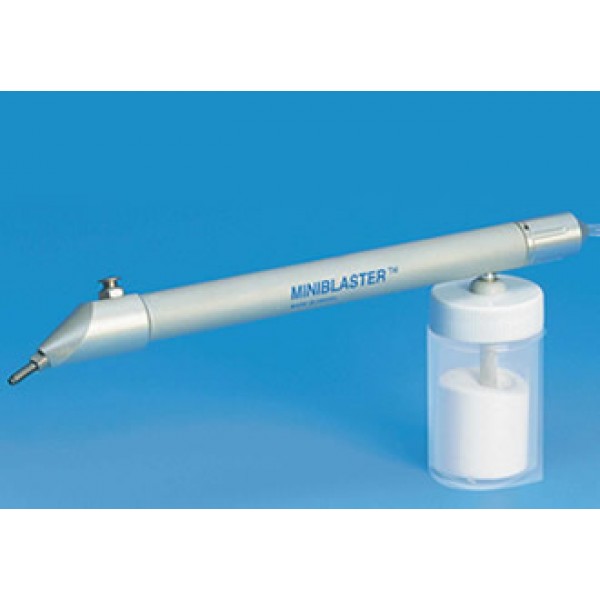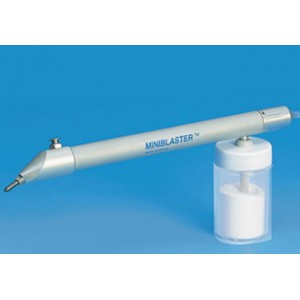- Produces microretentive surfaces to enhance bonding to all dental materials.
- Index-finger controlled valve gives maximum ergonomic control and requires less operating pressure.
- Designed for left- and right-handed operators.
- Unique rachet system for simplified nozzle rotation and angulation; no need to waste time loosening and tightening collars.
- FDA approved for intra-oral use.
- Tungsten carbide nozzle for wear resistance.
- Optional nozzle extension with 360° rotation for difficult to reach areas.
- In-line high pressure stop-cock with built-in on/off toggle included.
- Simple installation kit included.
- Can also use at 35psi on existing handpiece tubing or handpiece quick disconnect (Kavo, W&H, Sirona).
- 1 year warranty.
Brackets
Not uncommonly, an orthodontic bracket may be dislodged from the tooth during orthodontic treatment. If this occurs, the choice is either to replace it with a new bracket (additional cost of bracket) or if available, to recycle the bracket by means of a recycling technique.
Sandblasting of the mesh of the bracket will completely remove old existing composite and will enable the same bracket with a superior sandblasted surface to be rebounded in the same patients mouth immediately. The total procedure takes only a few moments and a few cases will quickly cover the cost of unit, in time and convenience, as well as a saving in cost of additional brackets.
Bands
Molar bands may come loose during treatment. In most cases, it is the bond between the adhesive cement and the band that has failed, the adhesive to tooth junction often remaining intact. Prior sandblasting of the inner surface of the bands, especially in critical situations, such as with a rapid palatal expansion appliance, can significantly reduce this occurrence.
Bands that come loose should be sandblasted. This will remove old cement and prepare the band surface for re-cementation.
Retainers
Simple retainers (e.g. lingual cuspid to cuspid retainers) can be fabricated and bonded to the teeth, after sandblasting the bonding areas of the adapted wire (Zachrisson JCO 1995)
Bonding in the adult patient
Bonding can be more difficult in the adult patient where a great variety of restorations may be encountered, that cannot be bonded to, with routine bonding protocols, as is the case when bonding to the natural teeth. These include crown and bridgework and restorations of various materials; amalgam, composite, porcelain and precious metals.
Effective bonding to artificial surfaces has been facilitated by new techniques and materials but mechanical retention is an importantally to all bonding techniques.
Roughening a surface with burs or stones may create the appearance of roughness due to the periodic grooves and ridges but little micro-mechanical retention is achieved. (EDelA.and Edel J. Ind Dent.1998)
The Deldent Miniblaster strips away contaminants and a microscopic layer of metal, composite or porcelain depending on the material being blasted, creating a retentive surface with a miryad of microscopic undercuts. This increased surface roughness significantly enhances bond strength.
Can be used for surface preparation prior to bonding to all dental materials, including: precious, semi-precious, and non-precious metals; porcelain; composite; and resin materials. Macro-retention such as undercuts should be employed where possible in conjunction with the microretention produced by the Miniblaster.
















-80x80.jpg)













